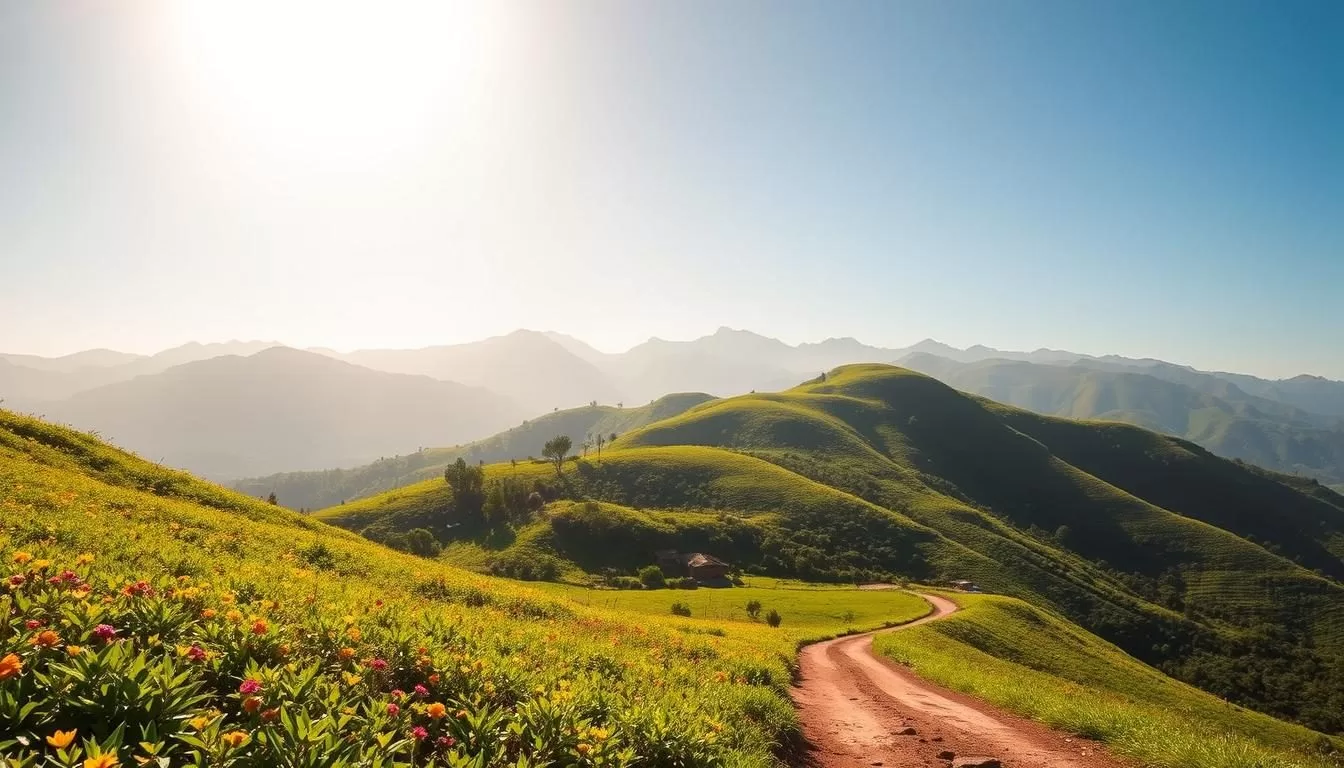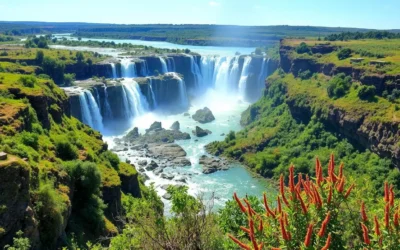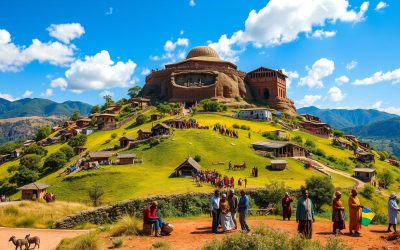✓ Accommodations ✓ Flights ✓ Rental Cars ✓ Tours & Activities
For many travelers, the dry season is considered the best time to visit, typically from October to February. However, experiencing cultural festivals during the rainy season can be a unique and enriching experience.
Understanding the weather patterns and seasonal variations across different regions is crucial for a well-planned trip. From the cool highlands to the scorching Danakil Depression, each region has its ideal visiting period.
Whether you’re interested in historical sites, trekking adventures, or cultural festivals, this guide will help you determine the best time to visit based on your travel interests.
Understanding Ethiopia’s Climate Patterns
Understanding Ethiopia’s climate is key to a well-planned visit, as weather conditions can greatly affect your journey. Ethiopia’s climate varies significantly due to its diverse geography, ranging from tropical to temperate zones.
How Elevation Affects Weather in Ethiopia
Ethiopia’s elevation plays a crucial role in shaping its climate. The highlands, with elevations over 4,000 meters, experience cooler temperatures, while the lowlands are generally hotter. This variation in elevation results in diverse climate conditions across the country.
The Wet and Dry Seasons Explained
Ethiopia has two main seasons: wet and dry. The dry season, from October to February, offers clear skies and comfortable temperatures. The wet season, which includes the kiremt (main rainy season) from June to September and the belg (short rainy season) from February to May, brings significant rainfall to different regions at different times.
The country’s rainfall patterns vary; the north experiences peak rains in July and August, while the south has rainy seasons in April, May, and October. Understanding these patterns can help you plan your trip during the dry months for easier travel.
Ethiopia: Best Months for a Weather-Savvy Trip
Understanding the best months to visit Ethiopia can greatly enhance your travel experience. The country’s diverse climate means that the ideal time to visit varies depending on the region and your preferences.
October to February: The Prime Dry Season
The dry season, spanning from October to February, is considered the best time to visit Ethiopia. During these months, the weather is generally dry and pleasant, making it ideal for exploring the country’s historical sites and natural wonders. You can enjoy comfortable temperatures and clear skies, perfect for trekking and sightseeing.
Key benefits of visiting during this period include:
- Comfortable temperatures
- Clear skies for optimal sightseeing
- Dry conditions ideal for trekking and outdoor activities
March to May: Shoulder Season Benefits
If you’re looking to save money, consider booking a trip in March or April, when the rains are light and prices for accommodation and tours are generally lower. This period, known as Tseday, offers a good balance between favorable weather and smaller crowds.
Some advantages of traveling during the shoulder season include:
- Significant cost savings on accommodations and tours
- Lush landscapes providing beautiful scenery for photography
- Fewer tourists at major attractions, allowing for a more authentic experience

Regional Weather Guide for Travelers
To make the most of your Ethiopian adventure, it’s essential to grasp the regional weather variations. Ethiopia’s diverse climate zones require careful consideration when planning your travel itinerary.
Addis Ababa and the Central Highlands
Addis Ababa, the capital city, and the surrounding central highlands experience a mild climate, often referred to as the “spring” of Ethiopia. The average temperature ranges from 59°F to 77°F (15°C to 25°C). You can expect a pleasant climate year-round, making it an ideal destination for travelers.
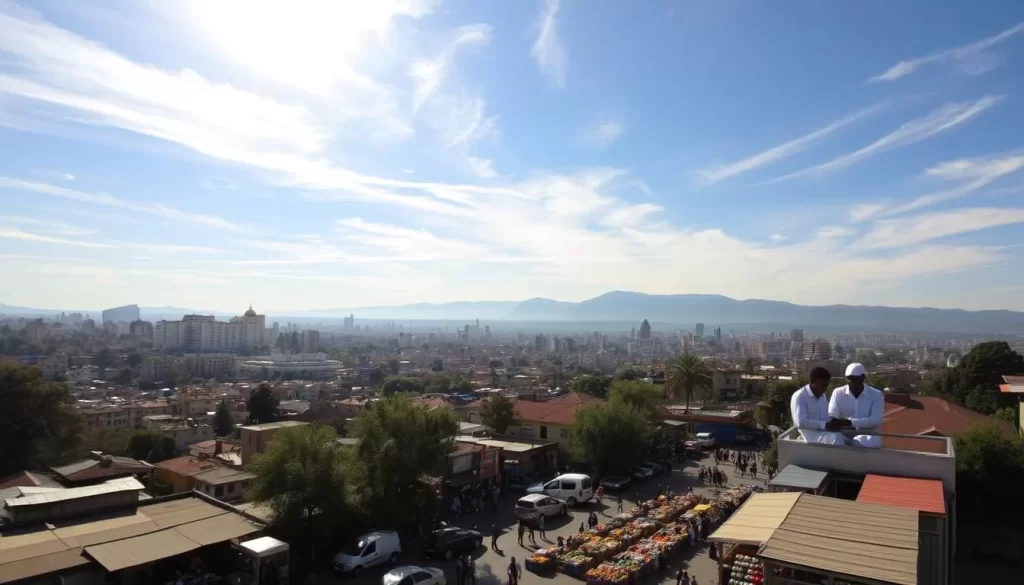
Northern Historical Route
The northern historical route, which includes Lalibela, Gondar, and Bahir Dar, has a similar climate to the central highlands. However, the region experiences a more pronounced wet season. Temperatures range from 64°F to 75°F (18°C to 24°C). You should be prepared for rain during the wet season, but the landscapes are particularly lush and green.
Eastern Ethiopia and Dire Dawa
Eastern Ethiopia, including Dire Dawa and Harar, experiences significantly warmer temperatures, with averages around 78°F (25°C). This region is generally arid, receiving much less rainfall than the central and northern highlands. The best time to visit is from October to February, when temperatures are relatively cooler and rainfall is minimal.
Destination-Specific Timing Tips
To make the most of your Ethiopian adventure, consider the best times to visit specific destinations. Ethiopia’s diverse regions offer unique experiences, but the timing of your visit can significantly impact your journey.
Simien Mountains: Best Months for Trekking
The Simien Mountains are best visited between October and February when the weather is dry and cool, ideal for trekking. During this period, the trails are less muddy, and the scenery is breathtaking.

Danakil Depression: Avoiding Extreme Heat
For the Danakil Depression, plan your visit during the cooler months from November to February. This period helps you avoid the extreme heat, making your exploration more comfortable.
Omo Valley: Navigating Dual Rainy Seasons
The Omo Valley experiences two rainy seasons: a longer one from March to June and a shorter one in November. The best times to visit are December to February and July to October, when roads are passable and cultural activities are more accessible. During the dry seasons, you can witness rich cultural experiences, including tribal ceremonies and markets, and enjoy wildlife viewing in Mago and Omo National Parks.
Planning Around Ethiopia’s Cultural Festivals
When planning your trip to Ethiopia, consider timing it around the country’s vibrant cultural festivals. These events offer a unique glimpse into the nation’s rich heritage and traditions.
Timkat (January) and Ethiopian Christmas
January is a great time to experience Timkat, a festival commemorating Jesus Christ’s baptism, which is celebrated with grand processions and reenactments. Ethiopian Christmas, known as Ganna, is another significant celebration that takes place on January 7, following the ancient Ethiopian Orthodox calendar.
Meskel and Ethiopian New Year
Later in the year, Ethiopia celebrates Meskel on September 27, commemorating the discovery of the True Cross. The festival is marked with dramatic bonfires and processions throughout the country, with the most impressive celebrations taking place in Addis Ababa’s Meskel Square. Ethiopian New Year, or Enkutatash, falls on September 11, marking the end of the rainy season with festivities that include flower exchanges, singing, and dancing.
Visiting during these festivals can enhance your cultural experience, with the added benefit of favorable weather during the shoulder season. A local guide can be particularly valuable during these times, providing insights into the historical and symbolic significance of the ceremonies.
| Festival | Date | Description |
|---|---|---|
| Timkat | January 19 | Celebrates Jesus Christ’s baptism with processions and reenactments |
| Ethiopian Christmas (Ganna) | January 7 | Follows the ancient Ethiopian Orthodox calendar |
| Meskel | September 27 | Commemorates the discovery of the True Cross with bonfires and processions |
| Ethiopian New Year (Enkutatash) | September 11 | Marks the end of the rainy season with flower exchanges and festivities |
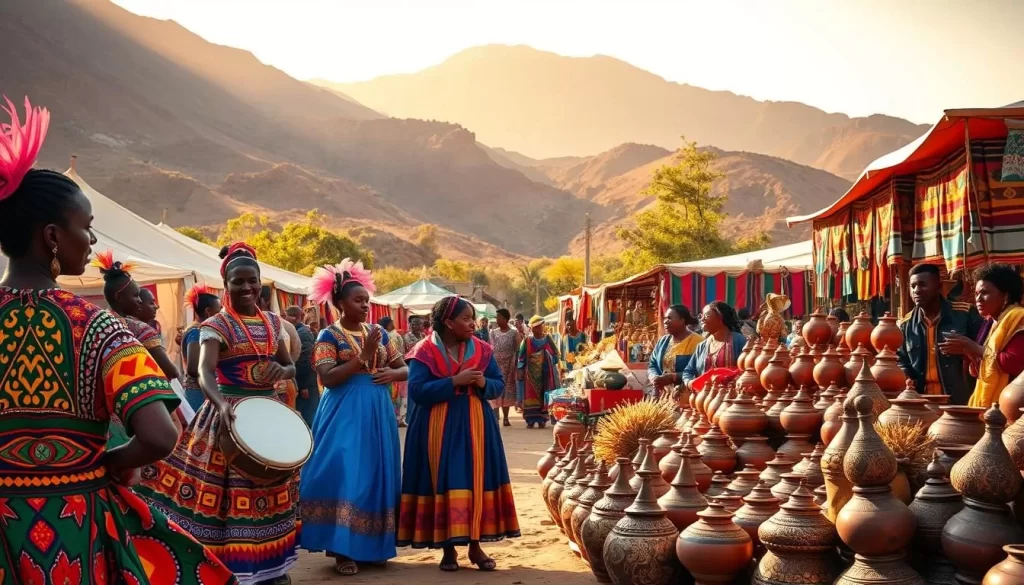
By planning your tour around these cultural events, you can enjoy a more immersive experience, taking in the vibrant traditions and festivities that Ethiopia has to offer.
Conclusion: Making the Most of Your Ethiopian Journey
To make the most of your Ethiopian adventure, it’s essential to consider the country’s seasonal variations. The dry season, from October to February, is generally the best time to visit Ethiopia. However, if you’re interested in cultural festivals like Timkat or Meskel, plan accordingly.
Each region has its optimal visiting period, so tailor your itinerary to avoid the wettest months of July and August.
The above is subject to change.
Check back often to TRAVEL.COM for the latest travel tips and deals.
